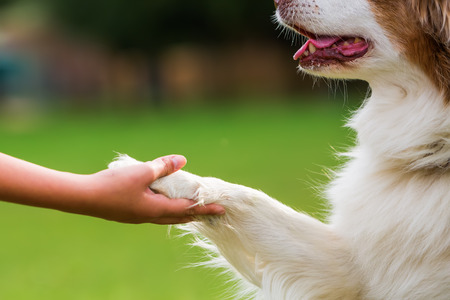Understanding Children’s Grief in the UK
Losing a beloved family pet can be one of the first experiences of bereavement for many children growing up in Britain. Pets often become cherished companions, offering comfort and unconditional love. When a pet dies, children may experience a range of emotions, from sadness and confusion to guilt or even anger. It is important to recognise that these reactions are natural and form part of the grieving process. In the UK, children might express their grief through changes in behaviour such as withdrawal, trouble sleeping, clinginess, or even acting out at school. Some may ask questions about death and what happens afterwards, reflecting the curiosity and uncertainty that comes with loss. Adults should remember that each child’s response is unique and shaped by their age, understanding, and previous experiences with loss. By acknowledging these feelings and providing gentle reassurance, families can help children navigate this difficult time with empathy and care.
2. Communicating About Pet Loss
Losing a beloved pet is a significant event in any family, and for children, it can be their first encounter with grief. In the UK, where pets are often regarded as cherished family members, it is essential for parents and carers to approach this sensitive topic with care and honesty. When discussing the death of a pet with children, using age-appropriate language and being mindful of British cultural nuances can help support their emotional wellbeing.
Honest Conversations: Age-Appropriate Approaches
Children of different ages understand loss in varying ways. For young children, simple explanations such as “Our dog Max has died. That means his body stopped working and he won’t be coming back” are both honest and clear. Older children might have more questions about what happens after death or may want to talk about memories they shared with the pet. Avoid euphemisms like “gone to sleep” or “run away,” as these can lead to confusion or unrealistic expectations.
| Age Group | Recommended Language | Common Reactions |
|---|---|---|
| Under 5 years | “Max died. He isn’t alive anymore.” | Confusion, asking repeated questions |
| 6–10 years | “Max’s body stopped working because he was old/ill.” | Sadness, curiosity, worry about other pets |
| 11+ years | “Death is a natural part of life; we can talk about how you feel.” | Deeper sadness, philosophical questions |
The Importance of British Cultural References
In the UK, it’s common to draw on everyday experiences—such as stories from classic British literature or references to countryside walks with pets—to help children relate. For example, mentioning how many families across Britain face the loss of a pet and remember them fondly during occasions like Bonfire Night or Christmas can provide comfort and normalise the experience. Encouraging children to talk openly, perhaps over a cup of tea or while walking in the park, fits well with local customs of gentle conversation and outdoor reflection.
Practical Tips for Gentle Discussions
- Create a quiet space—perhaps at home or during a walk—to talk without distractions.
- Encourage children to ask questions and express feelings without judgement.
- Acknowledge your own sadness if appropriate; this models healthy emotional expression.
- If your child attends school in the UK, inform teachers so they can offer additional support if needed.
Supporting Children’s Ongoing Emotional Wellbeing
Remember that grieving takes time and every child will process loss differently. Offering reassurance through consistent routines—like keeping up with after-school activities or Sunday roast dinners—can help maintain stability. By approaching conversations about pet loss with honesty, sensitivity, and respect for British values, you can support your child’s emotional wellbeing through one of life’s earliest lessons in love and loss.

3. Creating Meaningful Goodbyes
Saying farewell to a beloved pet is a significant moment in a child’s life, and creating a meaningful goodbye can be an essential part of the healing process. In the UK, there are various gentle customs and rituals that families can embrace to help children process their grief and honour the memory of their furry friend in a respectful and comforting manner.
Pet Memorials at Home
One heartfelt way to help children say goodbye is by holding a simple memorial service at home or in the garden. Encourage children to share stories, draw pictures, or write letters expressing their love for their pet. Placing these mementos in a special box or under a favourite tree can be both therapeutic and meaningful.
Remembrance Rituals
Lighting a candle together as a family in memory of your pet is another gentle ritual often embraced across the UK. You might choose to play some soft music or read a poem that reminds you of your pet’s unique personality. These small acts help children feel supported while also acknowledging their feelings of loss.
Planting for Remembrance
Planting flowers, a shrub, or even an oak sapling in your garden as a living tribute is a traditional British gesture that many families find comforting. Watching the plant grow provides an ongoing reminder of happy memories shared with your pet, helping children understand that while their companion may be gone, their love endures.
Personal Touches
Allow children to personalise goodbyes in ways that feel right to them—perhaps by crafting a paw print keepsake using clay, assembling a photo collage, or choosing a favourite toy or collar to keep as a memory. These actions give children agency in how they remember their pet and provide comfort during this emotional time.
Involving Community Support
If your child feels comfortable, inviting close friends or relatives who knew the pet can help build a sense of community support. Whether it’s sharing memories over tea and biscuits or simply being together, communal grieving can reinforce that they are not alone in their sadness.
By gently guiding children through these thoughtful UK-based traditions, families can foster resilience and compassion while saying goodbye. Each act—no matter how small—serves as a step towards healing and cherishing the special bond shared with their beloved animal companion.
4. Ongoing Emotional Support
Supporting children’s emotional wellbeing in the weeks and months after a pet’s passing is a vital part of helping them heal and adjust. It’s important to remember that grief doesn’t follow a strict timeline, especially for younger family members, and ongoing reassurance is key. Here are some practical ways to provide continual support and recognise when extra help might be needed.
Offering Comfort and Reassurance
Children may revisit their feelings of sadness or confusion long after the initial loss. Encourage open conversations by regularly checking in with your child about their feelings. Let them know it’s perfectly normal to have mixed emotions, including sadness, anger, or even relief. Share your own memories of your pet to show that it’s okay to talk and remember together.
Establishing New Routines
The absence of a pet can leave a noticeable gap in daily life. Creating new routines can help children feel secure and regain a sense of normality. For example, if your child was used to walking the dog after school, perhaps replace this with a different outdoor activity or quiet time together.
Monitoring Wellbeing Over Time
Keep an eye out for changes in behaviour that might signal your child is struggling more than expected. Below is a table highlighting common signs to watch for and possible actions you can take:
Signs Your Child May Need Extra Support |
What You Can Do |
|---|---|
| Withdrawal from friends or favourite activities | Encourage gentle social interaction and reassure them that their feelings are valid |
| Changes in sleep or appetite | Maintain consistent routines; offer comfort foods or bedtime stories |
| Persistent sadness or tearfulness beyond a few weeks | Open up space for regular chats; consider creative outlets like drawing or writing about their pet |
| Anxiety about losing other loved ones | Provide reassurance about the safety of family members; keep communication honest but age-appropriate |
| Trouble concentrating at school | Liaise with teachers so they’re aware of the situation; ask for support if needed |
| Physical complaints (stomach aches, headaches) without medical cause | Acknowledge their discomfort and seek guidance from your GP if symptoms persist |
When Professional Help Might Be Needed
If your child’s distress seems overwhelming or doesn’t improve over time, don’t hesitate to reach out for professional support. In the UK, services such as Childline, local bereavement charities, or your GP can provide tailored assistance and advice. Seeking help early can make a significant difference in helping your child process their loss in a healthy way.
5. Involving Schools and the Community
When a beloved family pet passes away, the impact on a child’s emotional wellbeing can extend beyond the home. In the UK, schools and local community groups play an important role in providing additional support during this difficult time. Collaborating with teachers can be especially valuable, as they are often able to spot changes in a child’s mood or behaviour and provide sensitive guidance in the classroom setting.
The Role of Teachers
Teachers in the UK are trained to recognise signs of distress and can offer a listening ear or suggest practical activities that may help children express their feelings. Letting your child’s teacher know about your pet’s passing means they can keep an eye out for any signs of struggle and offer extra reassurance throughout the school day. Many schools have pastoral care teams or counsellors who are experienced in supporting bereaved pupils, whether through one-on-one conversations or group activities focused on understanding loss.
Community Groups and Charities
Beyond the school gates, local groups and national charities such as the RSPCA frequently provide resources for families dealing with pet bereavement. These organisations may offer workshops, helplines, or special sessions aimed at helping children talk about their experiences in a safe and supportive environment. Some communities also organise remembrance events where families can share memories of their pets with others who understand what they’re going through.
How to Access Support
If you feel your child would benefit from wider support, consider reaching out to your school’s pastoral team or contacting a local branch of animal welfare charities like Blue Cross or RSPCA. Many of these organisations have downloadable guides, online forums, and even storybooks written specifically for grieving children in the UK context.
Building a Supportive Network
By involving both schools and community groups, you help create a network of care around your child. This collective approach not only validates their feelings but also reassures them that they are not alone in their grief. Together, these resources can make a significant difference to a child’s ability to process loss and begin to heal after saying goodbye to a treasured family pet.
6. Considering a New Pet
Deciding when—or if—to welcome a new pet into your family after the loss of a beloved companion is a deeply personal journey, especially in the UK where pets often hold a special place in our homes and hearts. It’s important for families to approach this decision thoughtfully, taking into account each child’s readiness and emotional wellbeing. While some children may express eagerness to fill the emptiness left behind, others may need more time to process their grief. There is no “right” timeline; what matters most is respecting each individual’s feelings and pace.
Opening Honest Conversations
Begin by having open and gentle discussions with your children about how they’re feeling and what bringing a new pet might mean for them. Involve them in every stage of the conversation—this helps children feel heard and reassured that their emotions are valued. Remind them that it’s natural to feel both excitement and sadness at the thought of another animal joining the family.
Recognising Readiness
Look for signs that your child is ready: Are they able to talk about their lost pet without overwhelming distress? Do they express interest in caring for another animal, or are they still preoccupied with memories of their previous companion? Some families in the UK find it helpful to volunteer at local animal shelters or visit friends with pets before making any decisions—these experiences can gently reintroduce the idea of animal companionship without immediate commitment.
Respecting Each Child’s Pace
It’s common for siblings or other household members to be at different stages of readiness. Encourage patience and mutual respect within the family. Perhaps set aside time for everyone to share their thoughts, or create a memory project together before considering another pet. This process can help ensure that welcoming a new animal feels like an opportunity for growth rather than an attempt to replace what was lost.
The Practicalities of Pet Ownership
When you do decide that your family—and especially your children—are prepared, take time to consider which type of pet best suits your lifestyle. Factors such as your home environment, daily routines, and even the traditional British weather can influence your choice. Discuss responsibilities openly so that everyone understands what caring for a new pet entails.
Ultimately, welcoming a new pet should be a hopeful step forward, grounded in love and care for both your children and any future companions. By allowing space for grief while nurturing hope, UK families can honour their lost pets while opening their hearts to new bonds.


